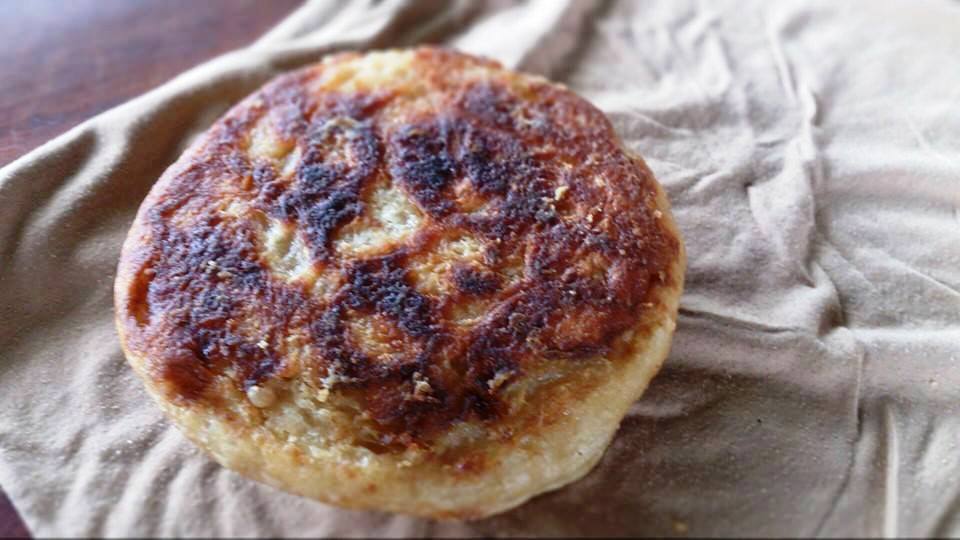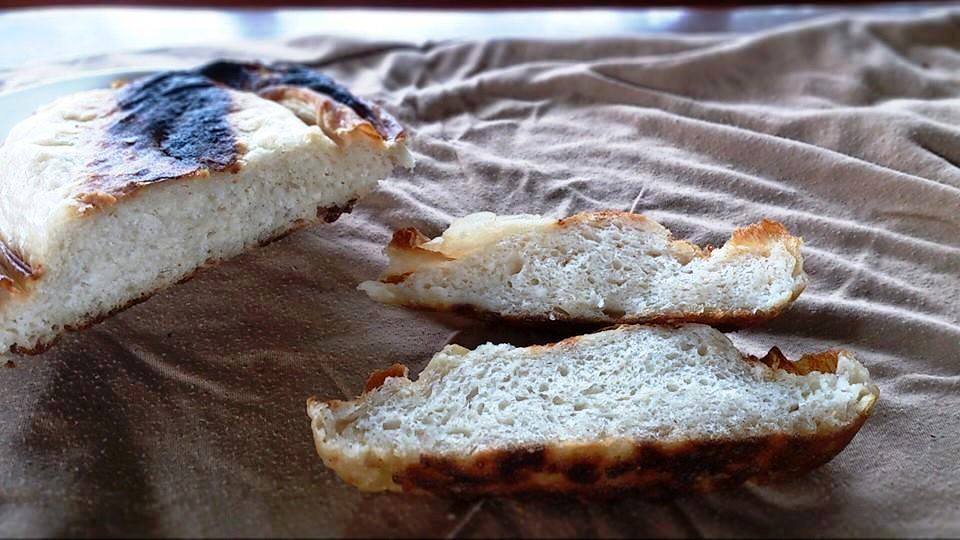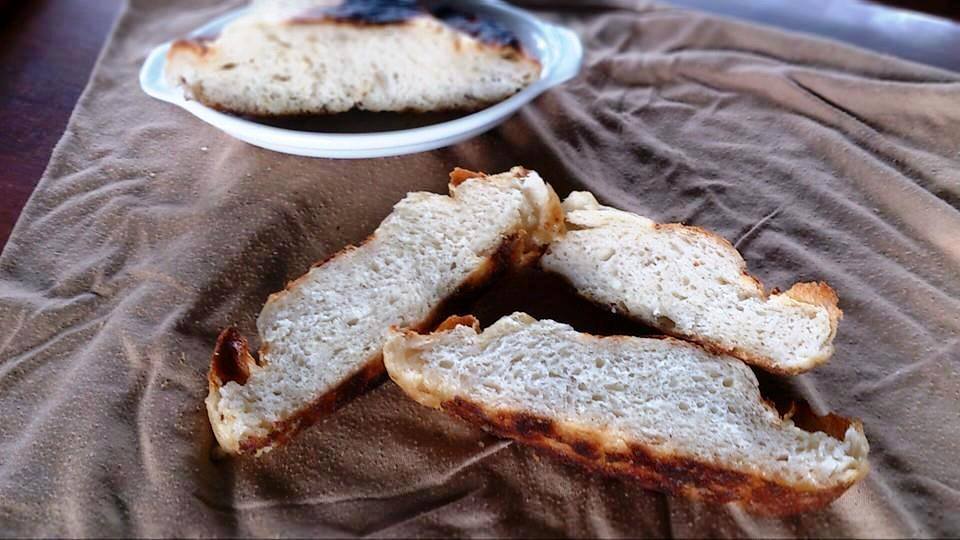This is perhaps one of if not the CRAZIEST idea to make bread. I don’t know what struck me to think of this but it worked! I just posted my most decent lean bread that I made a few days ago yesterday with good results but I want the top crust to be crisp just like oven baked bread so I made another experiment.
My problem with breads of this type when baking in a clay pot is pale tops and burnt bottoms; so I then thought, what if I cooked the bread at a lower temperature to cook the inside and set the structure then finish at high dry heat to just develop the crust? The high heat necessary for the second cooking isn’t a problem with my pot (it turns bread into charcoal :P) so the only problem is the first cooking method.
I’ve read that steam is necessary for the crisp crust of lean hearth breads but only at the beginning of the baking process so I thought of separating the process; steam the bread in the steamer then finish the crust in my clay pot, easy right? The bread is already cooked and only surface browning is what I’ll be looking for so no risk of raw dough and burnt crust. Not really, the uneven heat in the pot will only brown one side of the bread, so I then thought that one side’s crust should be already developed before going into the pot.
I suddenly remember my favorite treat from Chinatown, Shanghai fried siopao! Outside my country I think it is known as ShengJian Bao/ShengJian Mantou. Buns are fried until crispy at the bottom then hot water is poured to steam the top. I think it will solve my problem so I went to make the bread.
I made the usual 70% hydration 50/50 Bread and all-purpose flour mix and made a cold autolyse for 24 hours! I originally planned to have a 16 hour cold autolyse but my mom defrosted the refrigerator and I don’t want to mix in the yeast without a place for a retarded bulk rise, so I just put it in a cooler for 8 hours until I was sure that the fridge is clean and cold. I then mix in the instant yeast and salt and gave it a bulk rise for 2 hours with 3 sets of stretch and folds before putting it in the fridge. The next morning, I pre-shaped it into a boule, rested it for an hour then shaped it into a tight boule and finally proofed it seam side up on a cloth for an hour.
To cook the bread, I preheated a frying pan during the last minutes of proofing and pour a thin layer of oil; I made sure the pan is hot enough so the dough won’t stick. I slide the dough and fry the bottom until it is brown, about 3-5 minutes then boiling water is poured and I covered the pan to steam for another 15 minutes, I check the water from time to time so the bread won’t burn.
For the second stage, I let the bread cool a bit then put it UP-SIDE DOWN over two oiled llaneras, then baked it in the pot over high heat for 8 minutes, every 2 minutes I check and rotate it so the top gets evenly browned.
The crust was nicely browned and charred, I must admit that I left it a moment longer that's why it was charred on some areas. Yes I like a bold bake but not to this extent (I just said to myself, at least it is not "charcoal" and still edible) so I was surprised that it added a whole new dimension to the flavor profile; the bittersweet caramelized notes of the crust is delicious; now i know why some breads are intentionally charred like pizza napoletana. Also, It looks like it was scored but it wasn't. Those white "spots" are just areas not directly exposed to the radiant heat at the bottom of the pot which came from how I positioned the two llaneras to support the bread. A pretty accident indeed!

The fried bottom, it is also crisp but in a different way!

Crumb shots



The bread is sweeter and richer than my previous attempt, the crumb is chewy and the thin crust is crisp all over. One problem though is the lack of spring because of the lower cooking temperature so the bread a little flat with a slightly tight crumb but the trade-off is worth it, I will probably try next time with a dryer dough for an already tall loaf and a better support of the structure in that wet environment.
This is what was left 5 minutes after I served the bread...

Graduation is near and i will move to my dormitory in the next few days to have my on-the-job training in another town, a 3 hour drive from where I currently live. I will really miss my pot for almost two months that's why I'm baking as much as I can.
This is my hero and my best friend since 2011. I bought it using my savings from my daily allowance without knowing if I will succeed. I'm glad I had the courage to try it, many delicious breads and baked goods that my family ate and loved came from it. Thank you very much!
